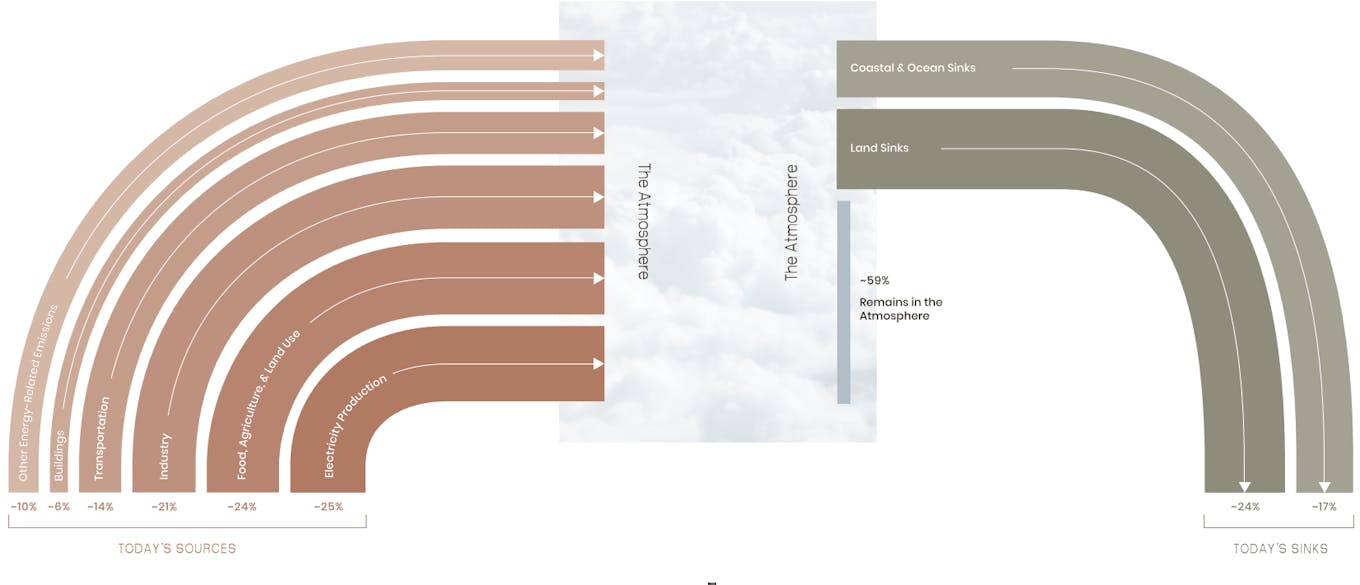The tools needed to avert runaway climate change are available, established and economically feasible today. All that is needed is more aggressive action from policymakers, businesses and communities to deploy them at scale, new research published on Tuesday has found.
To continue reading, subscribe to Eco‑Business.
There's something for everyone. We offer a range of subscription plans.
- Access our stories and receive our Insights Weekly newsletter with the free EB Member plan.
- Unlock unlimited access to our content and archive with EB Circle.
- Publish your content with EB Premium.
With existing technology and solutions to cut emissions, support carbon sinks and improve society, the world could ensure greenhouse gas levels in the atmosphere peak and begin declining by as early as the mid-2040s.
This would halt global heating within two decades after carbon concentrations peak, keeping it well below two degrees Celsius, reads the study, by American climate mitigation research organisation Project Drawdown.
Financial savings from climate solutions far outweigh the costs of inaction, shows the report, which analyses the economic and physical feasibility of available climate-saving tools and practices. Already today, climate disasters lead to crop failures and displace communities, while air pollution causes health problems that kill seven million people a year.
“
The tools we need are here, today, and can be deployed at scale.
Dr Jonathan Foley, executive director, Project Drawdown
But although the financial case for change is crystal clear, unfounded arguments about the lack of economic viability continue to persist. At present, global efforts to tap existing solutions come nowhere near the scale, speed or scope required, write the authors.
From transportation and industry to forest management and buildings, the study identifies about 10 sectors and more than 80 solutions through which the excess of greenhouse gases in the atmosphere could be stemmed, highlighting energy, food and land use systems as the biggest areas of opportunity.
“Together, these solutions show us that we can address a seemingly impossible challenge,” said Dr Jonathan Foley, executive director of Project Drawdown. “The tools we need are here today, and can be deployed at scale.”
“But we need to use them all—dozens and dozens of solutions in different sectors. Only then does the physics and economics work. All that is lacking is the political will and leadership to make it happen,” he added.
Assaad Razzouk, chief executive of Singapore-based renewables company Sindicatum, said: “Project Drawdown is absolutely right. It is a no-brainer. We know exactly what to do, but we are just not doing it.”
The three big forces obstructing climate action, he said, are markets that are failing to put a price on climate risks, corporations taking advantage of mispriced products and materials that come with environmental externalities, such as plastics, and governments that continue subsidising fossil fuels while supporting their expansion through policies. “Ever since the Rio Earth Summit in 1992, the world has been fighting these three massive powers,” he told Eco-Business.
“It is only recently that we have started to detect progress on all three fronts,” he said, citing General Motors and Volkswagen’s ambitions for electric mobility, new national climate targets set by governments in New Zealand, the European Union and Singapore, and BlackRock’s announcement that it would begin to shift away from fossil fuels.
No silver bullet
To save the world from climate doom, governments and corporates have pinned their hopes on a handful of solutions, including renewables, electric vehicles and carbon capture.
But there is no silver bullet in the climate fight, says the study. A wide range of often underestimated solutions needs to be harnessed, from retrofitting buildings to plant-based diets to equal access to health and education.
Moving solutions forward will also require more than changing policies and redirecting capital. Changing behaviour, shaping culture and shifting political tides to nudge society towards available solutions, defeat the entrenched interests of sunsetting industries and foster a sense of collective courage are just as vital in the climate fight, reads the report.
Chad Frischmann, vice president and research director at Project Drawdown, said all solutions available had to be tapped in parallel, as their impacts occurred only as part of an interconnected system.
Revamping agriculture, for instance, will require interventions on both supply and demand sides, while electric vehicles only work for the climate if they run on clean power.
“It is the implementation of this system of solutions that is the real solution to climate change,” Frischmann observed.
Think beyond renewables
Burning fossil fuels for electricity, mobility and heat currently drives roughly two-thirds of climate emissions worldwide. Power generation accounts for one-quarter of total greenhouse gas emissions globally, with transportation contributing 14 per cent, and buildings 6 per cent.
This means that reaching climate drawdown—the point at which greenhouse gas concentrations in the atmosphere level off—will depend on solutions such as green power, electrified transport or enhanced energy efficiency.
But beyond the need to shift away from climate-disrupting coal, oil and gas, some of the most powerful climate solutions have received comparably little attention, the analysis shows.
Cutting food waste and adopting plant-rich diets, for instance, could curb demand for grains and crops, tackling the associated deforestation and emissions. New research shows consumers discard much more food than widely believed, indicating that the issue has been severely underestimated.
Capable of capturing carbon dioxide already in the atmosphere, temperate and tropical forests, as well as other land-based coastal and ocean sinks, are other examples of powerful weapons in the climate fight, calling for the need to protect, restore or expand these valuable ecosystems.

Global sources of greenhouse gas emissions and carbon sinks. Image: Project Drawdown
Preventing ozone-depleting hydrofluorocarbons from escaping into the atmosphere is another climate-saver. Greenhouse gases hundreds to thousands of times more climate-damaging than carbon dioxide, these chemicals can leak from refrigerators and air-conditioners due to wear, faulty maintenance or inadequate disposal of equipment.
The report also identifies women empowerment through education and healthcare as a key to emissions reduction. Giving women greater agency leads to falling rates of reproduction, shrinking populations that will be eating, moving, plugging in, building, buying and wasting. Overall, this could have as big an impact as switching the whole planet to plant-rich diets, the study finds.
Consumption itself, however, is in dire need of transformation, and nowhere more so than in high-income countries. Almost half of consumption-related emissions are generated by just 10 per cent of people globally, the analysis shows.
Global energy-related carbon dioxide emissions—the biggest source of climate emissions—flattened last year after two years of increases, according to the Paris-based International Energy Agency.
But to stand any chance of keeping dangerous global heating in check, the world must cut emissions by 7.6 per cent annually until 2030 and reach net-zero emissions by mid-century, the UN says.










